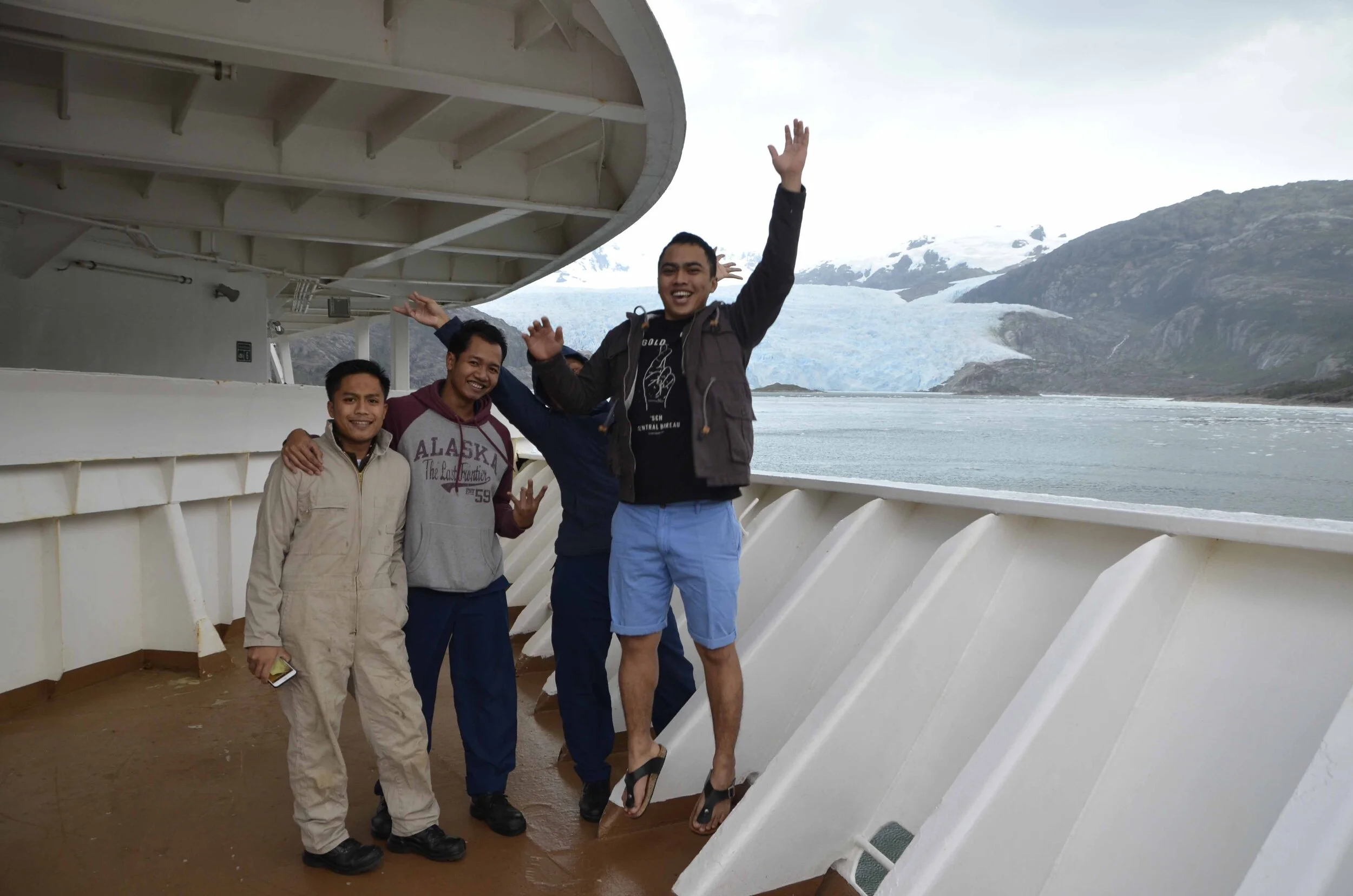Bruno Glacier, So Close And Personal
Ahead, a glowing blue-white face of cracked and fissured ice two kilometers across and hundreds of feet high.
Strait of Magellan, Magallanes, Chile Saturday, January 28, 2017
Prior to entering the Strait of Magellan we had the opportunity to view Bruno glacier in the morning. Weather was beautiful and we had dolphins and seals playing at the bow. We also had fun during our photo-ops.
The Strait of Magellan is a 350 -mile navigable passage between the Atlantic Ocean and the Pacific Ocean. It is located at the southern extremity of South America. It separates South America from Tierra del Fuego and other islands south of the continent. Actually, there's really nothing straight about the passage. It is a maze of islands, bays and channels.
It was discovered by Ferdinand Magellan in 1520 and his transit took him 38 days. The following expedition in 1525 by Garcia Jofre de Loisa required him four and half months to solve the Strait's maze-like puzzel.
It has all kinds of weather from snow storms, rain, mist, and sometimes a very rare glimpse of sunlight but it is most often foggy. There are no icebergs or other kinds of ice formation in the Strait. It's water never freeze but has a very strong current. At certain places, the channels are very narrow. At other places, there are some extremely narrow and crazy S-turns between rocks and islands, that leaves virtually no space for navigational errors. Yet, despite all of these, it is one of the most scenic waterways in the world, often cold but dreamlike.
To the south of it is only icy water, barren islands and rocks, including the famous Cape Horn, and from there, the next stop is Antarctica and eventually the South Pole.
Crystal clear beauty of geologic slowness from the South Patagonian Ice Field.










